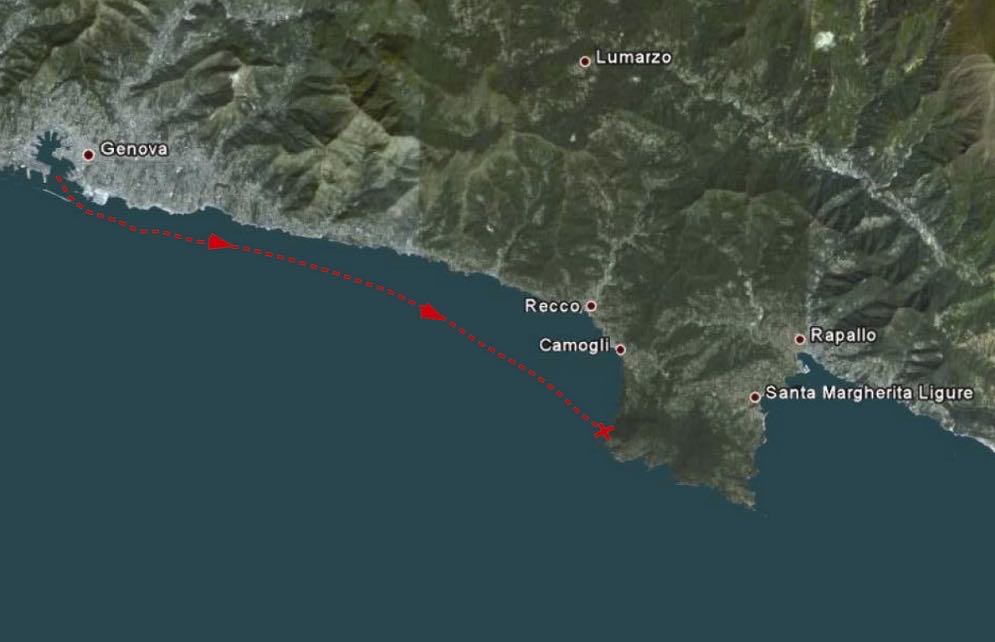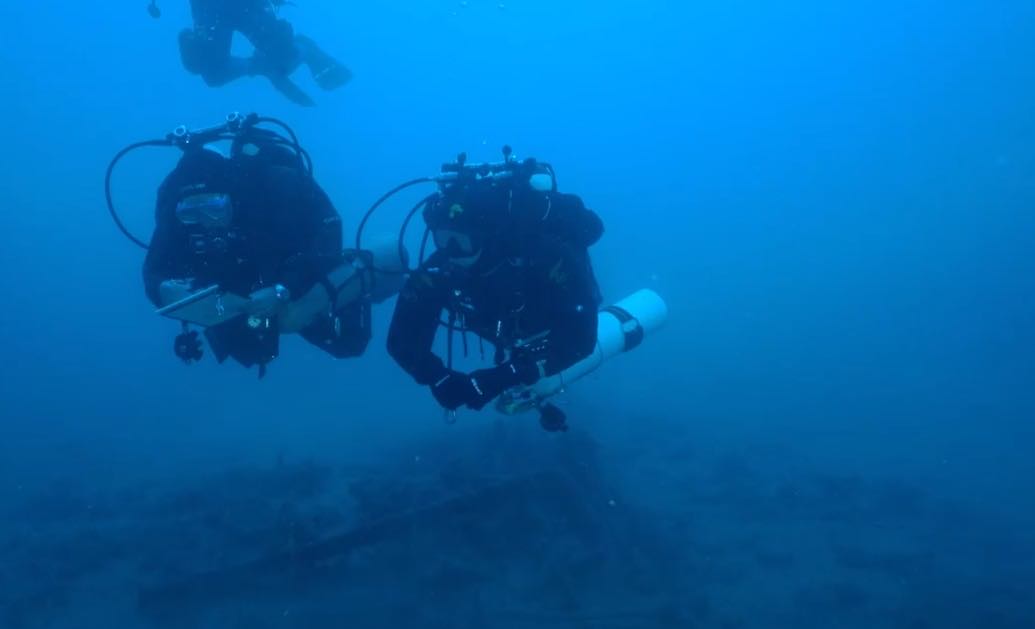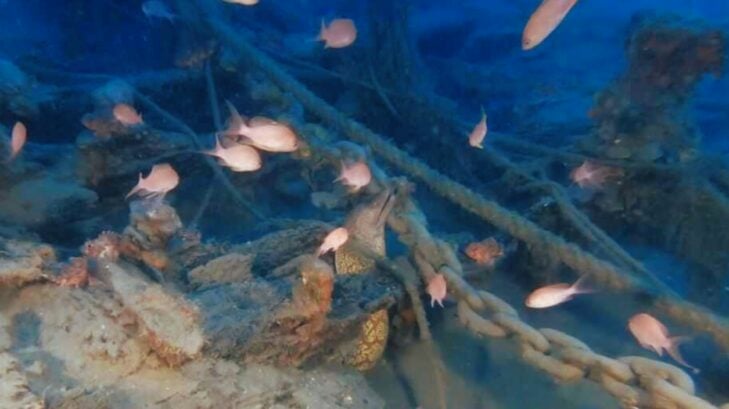In February 2020, two Italian divers discovered one of the biggest Italian merchant vessels of the 16th century at a depth of 150 feet off the coast of northern Italy, near Genoa.

This finding was qualified as highly important by the Archaeology Superintendency of Italy’s Ministry for Cultural Heritage & Tourism on June 19th, 2020. It is the first time a large renaissance-era shipwreck, complete with intact timber elements has been found. Investigations are now underway to confirm its identity and date.

Maritime Executive reported Luca Trigona, an underwater archaeologist with the superintendency saying, “Certainly the wooden comb elements, a double skeleton, are a rare find: [there are] only five ships of this type in the Mediterranean, the only one in Italy [is] that of Punta Chiappa. We will need time for the organization and execution of the investigations, but the new wreck Camogli 1 will certainly be a mine of information for the history of the Mediterranean.”
The Ragusa-style ship (see picture below) was wrecked off the coast of Camogli on October 29th, 1579. Experts are saying it is probably the “Santo Spirito – Santa Maria di Loreto”, a ship that weighed about 1,800 tons and was one of the largest ships that sailed the western Mediterranean in those times.
According to Archeonavale.org, its port was Ragusa of Dalmatia (today’s Dubrovnik), a maritime republic of the middle Adriatic that was then experiencing a particularly fortunate moment in commercial traffic on behalf of a large and diversified client.
At the time, the ship was captained by Antonio Iveglia Ohmuchievich, who belonged to one of the most illustrious families in that area. Looking back to the records of the payment of port taxes, the ship must have had a crew of about 130 members between sailors and officers.

What happened on October 29th, 1579?
Archeonavale.org reported that the “Santo Spirito – Santa Maria di Loreto” ship departure had taken place on the evening of October 28th, and on the morning of the following day, the ship was still struggling in the stormy waves in front of the town of San Rocco.
The inhabitants of this town and those of nearby Camogli were able to follow the ships drift from the coast up to where it made multiple impacts against a cliff. Water began to enter through the gaps that had opened in the planking of the now ungovernable ship.
The captain and crew managed to put a lifeboat into the sea and somehow reached a steep bank. Citizens of Ruta and San Rocco quickly came to their aid by throwing ropes towards the unfortunate sailors and helped them onto dry land. The entire crew was saved but the ship, unfortunately, went down.
The brave people of these towns, not only faced the danger of the violent waves but approaching the sailors exposed them to the risk of catching a disease from a virulent plague epidemic that was raging in the city at the time.



